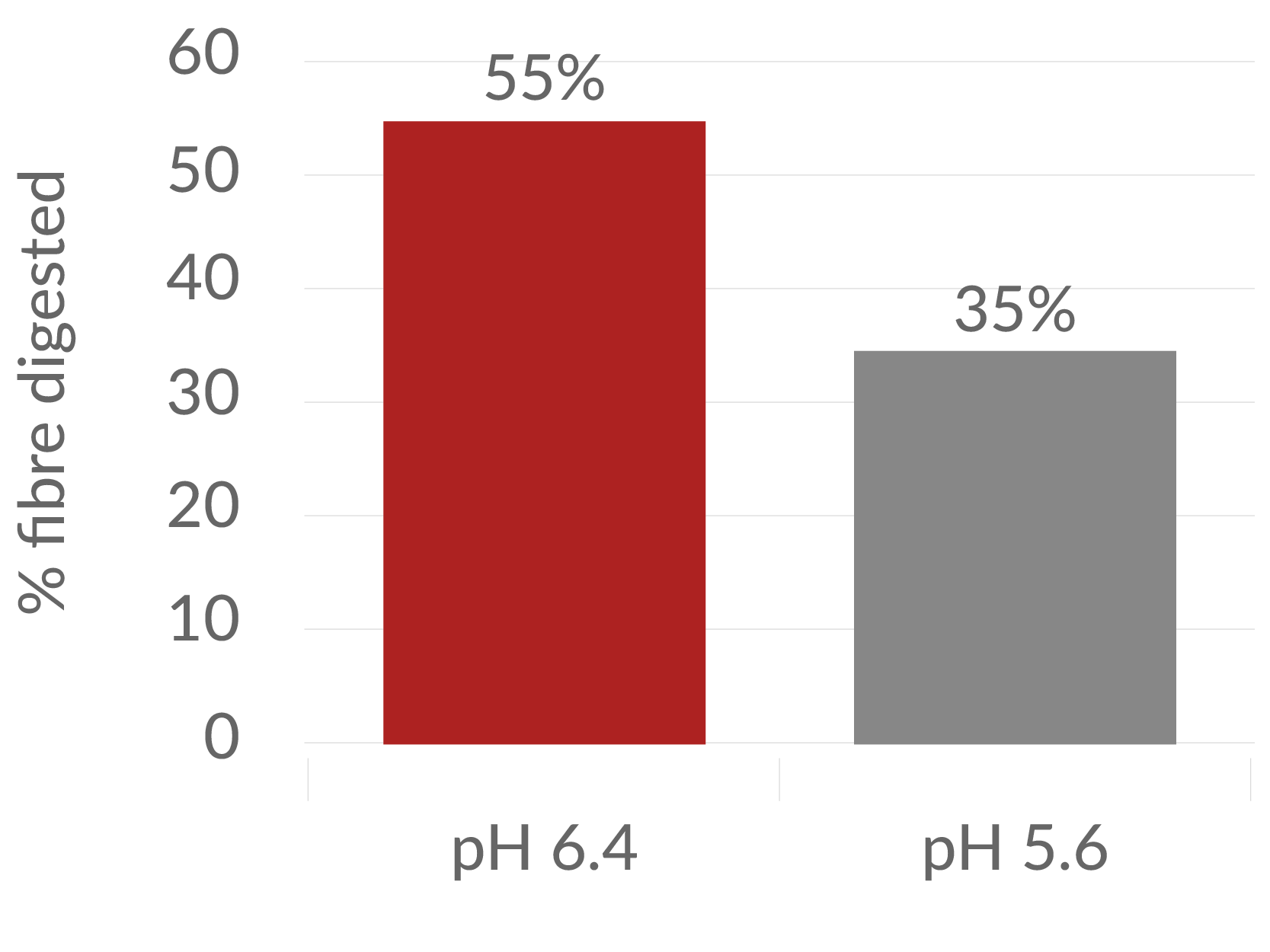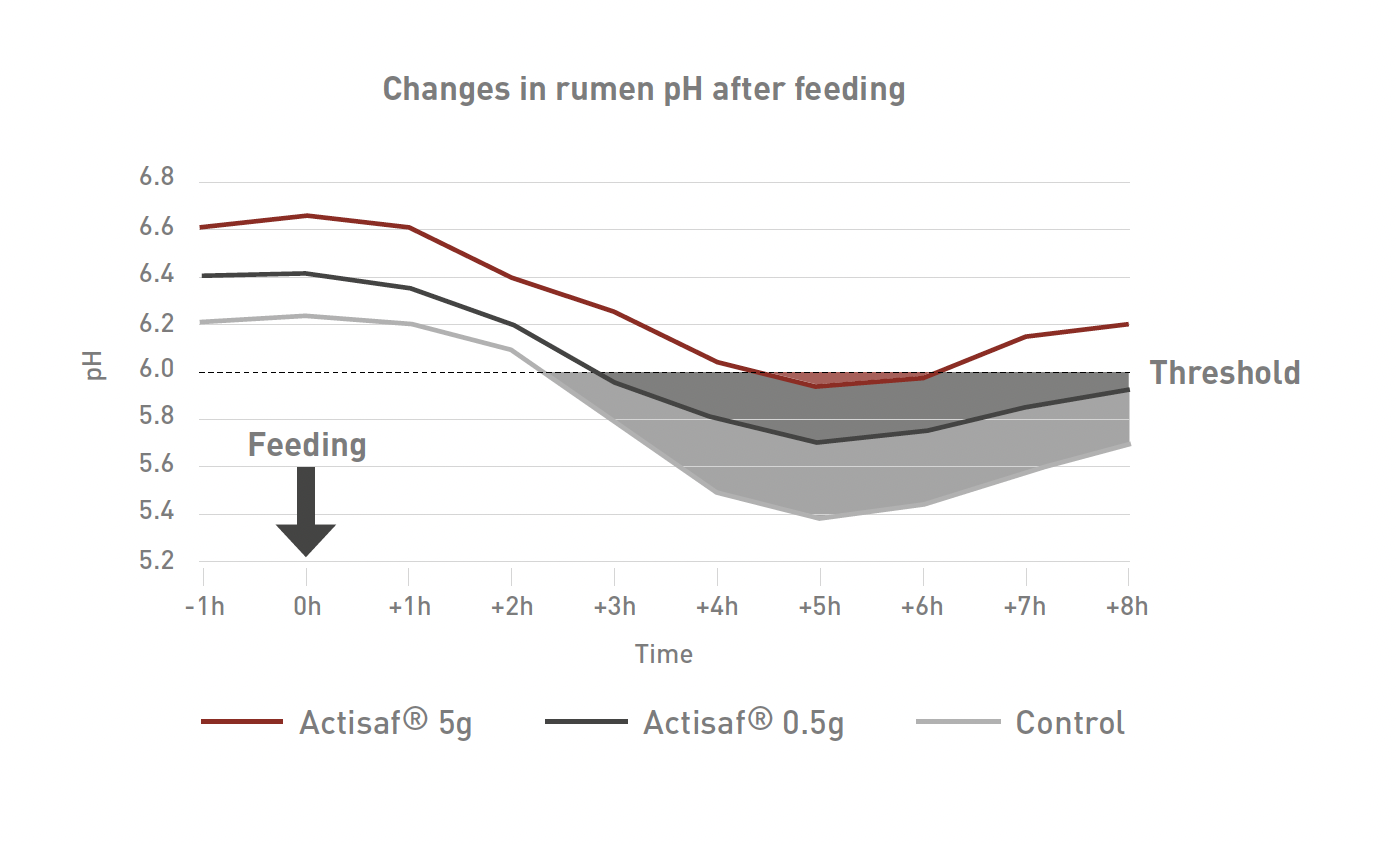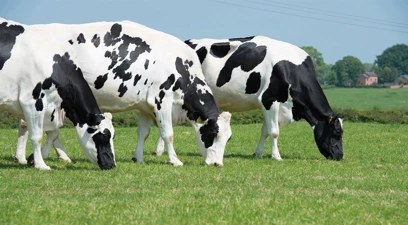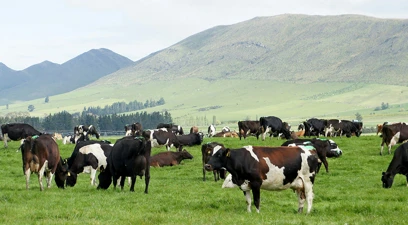Protecting rumen health this winter
Managing forage challenges and cereal-based diets
After the driest six months since 1976, UK forage analyses are revealing the impact of this growing season. While some regions have enjoyed strong yields, much of the country is facing forage that is higher in fibre and lower in fermentable energy. The potential effect? On the same amount of forage, herds may produce around 0.3 litres less milk per cow per day than last year.
At the same time, the closure of two British bioethanol plants has drastically reduced the availability of distillers’ grains, a source of fibre. To fill the gap, cereals like maize, barley and wheat will feature more heavily in blends and concentrates this winter. While this will boost energy in rations to support milk yields, it also brings fresh risks for rumen stability.
Why rumen health matters
The rumen microbiome is highly adaptable – but it needs time and consistency to adjust to dietary change. As cows move indoors and cereal inclusion rises, microbial populations are disrupted. Cereals ferment quickly, producing volatile fatty acids (VFAs) and lactic acid. If fermentation outpaces the rumen’s natural buffering capacity, pH begins to fall, fibre-digesting microbes die off, and the rumen becomes increasingly acidic.
With less fibre in the diet, saliva production also declines, further weakening the cow’s natural acid-buffering system. Once pH dips below 6.0, fibre digestibility drops sharply, energy supply falls, and the cycle can escalate into sub-acute rumen acidosis (SARA).
Watch our video outlining SARA at grass (the principles are the same for all forage!)...
The Cost of SARA
Even small drops in rumen pH have big consequences:
- At pH 6.4, cows digest only around 55% of fibre
- At pH 5.6, fibre digestibility falls to 35%

This loss of energy and nutrients leads to negative energy balance, reduced intakes and excessive weight loss. Knock-on effects include:
- Higher risk of displaced abomasum and ketosis
- Fertility challenges in early lactation
- Laminitis, elevated somatic cell counts, and poorer udder health
- Lower milk butterfats from reduced short-chain fatty acid production
Spotting the early signs
Kevin Doyle, Phileo’s technical manager, advises farmers to watch for “cow signals” that suggest rumen imbalance:
- Sudden butterfat drop of 0.3% in two to three days
- Loose, bubbly dung with undigested fibre
- Low cudding rates (fewer than 60–65% of cows lying and chewing the cud by midday)
- Poor rumen fill scores or reduced dry matter intakes
Catching these signs early allows for proactive intervention before SARA compromises performance and health.
Actisaf® Sc 47: Supporting a stable rumen
High cereal, low forage rations may be unavoidable this year – but Actisaf® Sc 47 live yeast can help mitigate the risks. By stimulating fibre-digesting microbes and lactate-utilising bacteria, Actisaf® supports:
- Improved fibre digestion
- Stabilised rumen pH through biological buffering – Just 5g of Actisaf® has a superior buffering effect compared to 150g of sodium bicarb
- Smoother adaptation to dietary changes

University of Nottingham trials show that feeding 10g/day of Actisaf® improved NDF digestibility by over 6% and boosted feed efficiency by 5% – without compromising body condition, fertility or health.

Turning Challenge into Opportunity
With reducing milk prices, we must carefully consider all costs in the diet and ensure they are providing a clear ROI. This includes maintaining rumen function to prevent SARA and ensure that every kilo of forage and cereal is converted as efficiently as possible.
Effective rumen management, supported by Actisaf®, will protect cow health, sustain performance, support milk solids and milk yield and help farmers make the most of challenging diets this winter.
Don't just take our word for it...

When silage quality dipped, Staffordshire dairy farmer James Turnock faced challenges with cow performance and rumen stability. By introducing Actisaf® into his herd’s diet, he was able to improve fibre digestion, maintain milk output and keep cows in good condition — even in a tough forage year.
“Since adding Actisaf® into the diet there has been a big improvement.... Actisaf® has solved the acidosis problem completely. Whilst it took a few weeks to take effect, dung consistency improved and cud balling has been eliminated. What’s very noticeable is the lack of dietary upsets - that has been the most visible benefit.”

After battling recurring acidosis in his herd, cheesemaker Malcolm Errington needed a reliable solution to stabilise rumen health. Adding Actisaf® to the ration resolved the problem, supporting digestion, cow performance and ultimately, milk quality for his artisan cheese business
“The minute we put the Actisaf® in we saw a benefit. It is hard to quantify but cows definitely seemed happier and more content, and cudding rates increased to more than 60% cudding 2 hours after feeding. Muck was more consistent and cows seemed to be lying down more."
Related Tech Info

Rising prices of feed, fertiliser and energy keep putting pressure on the dairy sector, with production costs at farm level r...

Heat stress is not only a challenge faced by milk producers in warmer climates - cows are also susceptible to it here in the ...

Under pressure from all sides, the dairy industry is exploring ways to reduce its environmental impact, while also maintainin...
